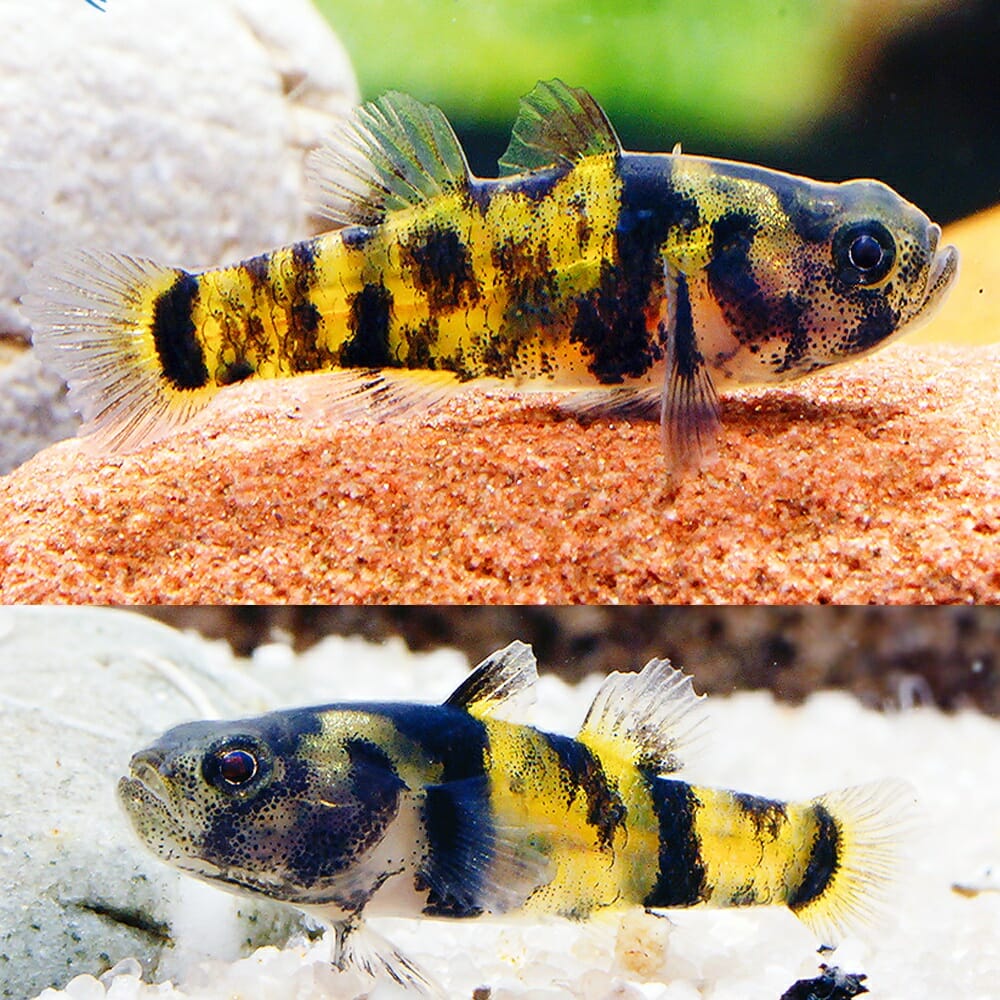Goby Bumblebee Burmese Spotted Dwarf
Goby Bumblebee Burmese Spotted Dwarf
For aquarists looking to keep a highly under-rated and oddball fish, the Burmese spotted goby is a perfect selection. These fish are a very rare find in the aquarium hobby and make for a great fish to keep in a nano display because of their small size, unique behavior, and colours. These spotted gobies are closely related to the common yellow and black bumble bee gobies which are popular fish to keep in brackish water aquariums however these spotted bumblebee gobies can thrive in full freshwater environments. Due to their lack of overall availability, there is a large lack of first had aquarist experience in regards to the care of these fish however they are reported to be fairly easy to keep despite their incredibly small size. The spotted bumblebee goby also has a very unique aesthetic when compared to other aquarium species, it has a small, stubby body that only reaches around 2 cm. Color-wise they have an almost translucent white colour with a hit of yellow at the name of their body, their most characteristic factor is the patterning of black striations and blotches through the body which is where they get their name from. Their small size also makes them a very peaceful fish that would be a great addition to a nano tank.
The Burmese spotted gobies are found through a broad demographic range starting from Laos (prior known as Burma) and going all the way to Thailand. They are considered to be tropical fish but can thrive in a varied temperature range from 22-28 degrees. These spotted gobies also come from locations where the PH is very acidic due to fallen leaves and organic matter in the tank so the recommended PH range would be anything from 4.5-to 6.0, this can be easily maintained through aquarium safe botanicals and hardscape selection such as driftwood.
Burmese spotted gobies would be the perfect fish to add to a very slow-paced nano community aquarium that emulates their wild blackwater setting. Breeding these is apparently possible however is a very difficult process because these fish do breed through specific environmental queues, in the wild their breeding behavior is usually triggered through temperature and seasons. Males are usually thinner whereas females can be a bit rounder, however, there are no obvious dimorphic factors in males and females.
Share


